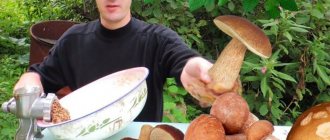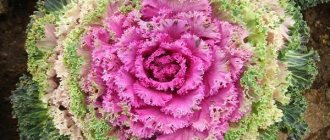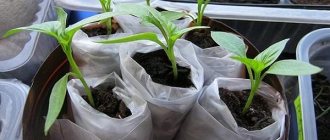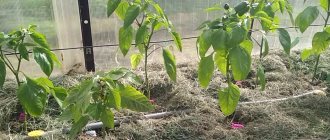The autumn season is the season of chrysanthemums. These flowers with a bitter aroma and beautiful flowers can create a great mood for each of us. Thanks to this, in the autumn, chrysanthemums move from store shelves to gardeners' plots and to the windows of our living quarters. Those who have been given chrysanthemums in a pot often think that the plant will not live long, and when winter comes, the flowers will wither and will have to be thrown away. In fact, chrysanthemum can exist at home for more than one year! It is necessary to understand that when the cold weather comes, the flower will not disappear, but will only fall asleep. Create the necessary environment for the plant, and it can easily survive the winter.
How to preserve potted chrysanthemums until spring? The illustration for the article is used under the standard license ©ofazende.ru
Please like and subscribe to the channel “ About Fazenda ”. This will allow us to publish more interesting gardening articles.
What chrysanthemums can be grown at home?
The “behavior” of chrysanthemums is often unpredictable. However, you can easily grow them in your room. For this purpose, use such types of chrysanthemums as:
- Indian;
- garden (Chinese);
- Korean;
- grandiflora.
All these plants are called garden chrysanthemums. Each has distinctive features, but they require almost the same care.
Chrysanthemums that are grown at home are also called “Chrysanthemum mix”. You may also hear the name “Oaks”. Since you need to care for all chrysanthemums indoors in almost the same way, you don’t have to go into too much detail about how their different types differ from each other.
Most often, small-sized varieties of chrysanthemums are preferred for home use.
Greenhouse varieties
Of the more than 20 types of chrysanthemums, the following varieties are most suitable for greenhouse conditions:
- Chrysanthemums "Balcombe Perfection" are a plant with medium-sized spherical yellow or orange buds;
- “White Spider” is translated as “white spider”, since the petals of these flowers look like long needles of a light shade;
- "Rayonnante" has purple tints and a longer stem;
- The largest inflorescences are produced by the Bornholm variety, presented in beige and brown tones;
- 'Diplomat' is known for its bright red blooms, with shades ranging from muted pink to rich crimson and burgundy;
- Chrysanthemums of the "Luyona" variety will delight gardeners with carved petals, long stems and lemon-yellow buds.
Before you start growing a plant, you need to use photos and images to determine the desired variety of flower, and also first study the accompanying information about the adaptability of chrysanthemums to greenhouse conditions.
What to look for when buying potted chrysanthemums?
When choosing a chrysanthemum, pay attention that the plant has woody lower parts of the stems. Limp, grayish or yellow leaves indicate that the chrysanthemum is weak and will not be able to survive the winter even in comfortable conditions.
It happens that the leaves look healthy, but if you carefully examine the underside of the leaf, you can see a thin web. This means that the plant has been attacked by a spider mite.
It is better to ensure that the chrysanthemum you purchase has as few flowers as possible that have already opened. It is ideal if only the details of the opening petals are visible from a practically clogged bud.
Autumn cold is not terrible for potted plants, but during the first frost they can suffer greatly. Do not purchase frozen chrysanthemums at low prices. Their flowers may look quite healthy, but the edges of the leaves “sag”, their leaves become dark in color, and after a few days they can dry out completely.
Sellers will claim that cold conditions are beneficial for chrysanthemums. Remember that frozen plants will not be able to survive the winter period; you can purchase them exclusively as a bouquet for one time.
When choosing a chrysanthemum in a pot, you need to give preference to plants with woody lower parts of the stems. The illustration for the article is used under the standard license ©ofazende.ru
Do I need to replant a potted chrysanthemum after purchase?
The purchased plants must have a small supply of fertilizers that last for a long time. This supply lasts until the summer season. However, the pot is small, so replace it with a larger container and add new soil. You can add garden soil with river sand and wood ash.
Using ready-made slightly acidic or neutral peat soil is also possible; add perlite.
When you take the purchased plant out of the container, it may turn out that there is not one chrysanthemum, but several. They bloom in “bouquets” in a container for a longer time than just picked flowers. If they are not separated, chrysanthemums will not be able to survive as perennial plants. Dense plantings are not for them, even on the site (it’s not worth talking about any containers). In such cases, remove excess chrysanthemums, leave one, or separate them and plant them in different containers.
Do not rush to replant flowers if you purchased chrysanthemums that do not have open flowers at all. At the stage of bud formation, chrysanthemum is especially vulnerable. Wait until the first flowers open and replant the plant.
Fertilizers
Feeding the flowers will not hurt, but it is worth remembering that an excess of fertilizers will lead to the abundant development of green leaves, not inflorescences. Therefore, it is necessary to determine the condition of the soil and the level of acidity. Neutral or slightly acidic soil is considered optimal.
An insufficiently fertile area is enriched with fertilizers.
You can also treat the chrysanthemum planting area with phosphorus at the rate of 50g per 1m2.
The planting area can be treated with phosphorus
To feed flowers, use a solution of water (10 l) and a concentrated infusion of manure (1 l). Fertilizer is especially important for flowers at the growth stage , so after planting and before full flowering, fertilization should be carried out regularly.
If the soil is fertilized during planting, then one tablespoon of peat and humus will be required per hole. The mixed mass with sand will enrich the plant with nutrients and create good drainage.
Bush chrysanthemum will become a real decoration of any site if planted according to all the rules, grown and cared for properly.
The main autumn flowers are chrysanthemums; planting and caring for these flowers in the open ground is not particularly difficult, but they require compliance with a number of conditions when growing, both in spring and autumn. Do not break the rules if you want to plant a flower from a bouquet or root a shoot, and to propagate the plant in the fall, read the basics. If you don’t know how to form a beautiful bush into a ball, then remember, you need pinching and pruning for the winter, or try to grow a special variety that will only need a single pinching...
How to care for chrysanthemums during flowering?
Give the chrysanthemum maximum attention so that it lives at home for more than one year. Remember that this is a garden plant, the life of which began in a greenhouse with special temperature and light conditions.
These flowers are grown using retardants, which slow down the growth of stems, speed up the flowering process and change the physiology of the chrysanthemum.
Remember this and do not brew teas from chrysanthemum petals that are purchased in stores and garden centers.
If you grow a chrysanthemum yourself from a seed, cutting or young shoot, it will be much easier for the plant to get used to living at home. The smell of such flowers is much more pleasant and stronger than those bought in a store.
When a chrysanthemum is taken out of a purchased pot, it is sometimes discovered that it is not one plant, but three or four.© Elena Vetrova
LitLife
Help us make Litlife better
Methods of growing flower crops
Hydroponic method of growing flower crops
The method of growing flower crops on non-earth substrates is called hydroponic (hydroponics).
It includes two methods:
1) hydroponics itself - growing plants without a substrate (water culture and aeroponics),
a) or on low-moisture substrates (gravel, expanded clay, granite crushed stone, etc.),
b) regardless of the type of low-moisture substrate, this method is called gravel culture;
2) growing plants on moisture-intensive substrates - various peat and mixtures of vermiculite with low-moisture-intensive substrates (expanded clay, gravel) in a ratio of 1:3 - 1:5 by volume.
Rice. 17. Hydroponic method options:
a – aeroponic method; b – hydroponic method; 1 – centrifugal pump;
2 – solution supply valve; 3 – plastic pipe; 4 – cup for plants; 5 – solution drain; 6 – return of solution; 7 – suction pipe; 8 – solution tank; 9 – rack; 10 – drainage half-pipe.
Aeroponic method of growing flower crops
Aeroponic method
based on the principle: ebb and flow. Plastic pipes are laid along the greenhouse. In each of them, at a certain distance from one another, there are small holes into which lattice polyethylene cups for plants are inserted. There is no soil in the cups with plants, and the roots are dipped into a nutrient solution that is supplied through pipes. Part of the time, plant roots are in a nutrient medium, and part of the time they are in an oxygen “bath”, when air is supplied to the roots under strict automatic control.
Gravel culture requires the construction of specially equipped greenhouses, but this method eliminates some of the labor-intensive processes required when working with the soil (for example, weeding), and allows for the introduction of complete mechanization and automation of plant care processes. For gravel culture, pits 40 cm deep are made in unracked greenhouses, the walls and bottom of which are concreted. The concrete is coated with a layer of special varnish so that the solution does not come into contact with the concrete and does not become alkalized. Three layers of substrate are poured into the pit.
Growing on shelves
They are usually grouped in groups of 7 to provide easy access to plants.
Rice. 18. Arrangement diagram in the greenhouse: 1 – shelving tray; 2 – roller; 3 – supporting structure.
Container growing method
Containers with a length of 120 cm are made from a polyethylene sleeve with a diameter of 40 cm.
Additional equipment: fertilizer dosing unit, container filler, film sealing device, etc.
Rice. 19. Schematic diagram of the container method: 1 – drip irrigation system; 2 – container, pipelines; 3 – above-ground heating; 4 – subsoil heating.
Ground culture
Much has already been said about it, a lot of examples have been given of both its advantages and disadvantages. One thing is clear: with this technology, the main problem is the substrate. The manufacturer is faced with a choice: either change the soil or somehow disinfect it. An option to solve this problem is to steam the substrates. Steaming is carried out under a film at a steam temperature of 100 °C. Steaming leads to the death of fusarium at a depth of 25 cm in 4 hours, and at a depth of 50 cm in 8 hours. Moreover, the quality of sterilization depends on the qualitative composition (components) of the substrate: in the presence of materials that conduct heat poorly (bark, turf soil), the substrate is less amenable to sterilization.
Steam is supplied until the temperature of the entire soil layer reaches 90 - 110 °C. The processing cycle is 6 – 14 hours.
Rice. 20. Steaming the substrate under a film tent: 1 – tent; 2 – pipe for steam supply.
Forcing chrysanthemums
1. Currently, there are more than 10,000 species of chrysanthemums. Their parents are two species of perennial chrysanthemums - Indian Chrysanthemum and Mulberry Chrysanthemum.
2. Archaeologists find images of chrysanthemums on fragments of pottery, coins, patterns of buildings and household utensils.
3. Japan is considered the birthplace of the chrysanthemum. The coat of arms of Japan features a chrysanthemum. The Order of the Chrysanthemum is Japan's highest state award. Only the Emperor of Japan and members of his family had the right to wear clothes with the image of a chrysanthemum. Violations of this law were punishable by death.
Choosing a place for potted chrysanthemums in the house
The first step when this flower appears at home is to choose a place for the plant that will be sufficiently well lit. Lighting with direct morning and evening rays of the sun, as well as bright diffused light, is most suitable.
The very first daylight rays of the sun can have a detrimental effect on the plant, so protect chrysanthemums from them (you can temporarily move the plant away from windows). Otherwise, under the influence of the hot rays of the sun, the buds will open and wither before they have time to fully bloom.
Features of planting in open ground
When planting flowers in your garden plot, it’s worth considering what they like:
- Sun;
- moisture;
- coolness;
- spraying.
Plants need regular feeding and replanting (every 2-3 years). To extend the flowering period from the bushes, dry inflorescences should be pruned.
To ensure long flowering, it is necessary to trim dry flowers.
When to send a chrysanthemum to sleep
The remaining flowers have faded, the bush becomes dull, the leaves become a little lethargic. When there are no buds left on the plant, it’s time to “put” the chrysanthemum to sleep.
In the modern world, the calendar dates have changed, which let you know when chrysanthemums bloom. In October you can buy blooming chrysanthemums with large flowers, but they are late bloomers. The upper buds of such chrysanthemums will open in November, and flowering will end in December-January. However, when such a chrysanthemum is “helped” to bloom early, the dormant stage may well begin in November.
Korean chrysanthemums bloom for quite a long time in open soil, in accordance with the period that corresponds to this variety. Chrysanthemums “Malchish-Kibalchish” bloom very early. Their flowers begin to open in July. August marks the peak of flowering of chrysanthemums such as “First Snow”. Chrysanthemums “Altgold” and “Snow White” bloom later than everyone else (until the frost).
If plants are grown at home, the timing of when they bloom will shift. If you organize the correct conditions for keeping potted chrysanthemums in the house, they can bloom for up to 2 months. November-December is a time of rest.
Temperature conditions
Potted chrysanthemums (both garden and indoor) love cool weather, especially at the flowering stage. These are not the most heat-resistant crops, which are comfortable only in typical autumn conditions. The higher the air temperature, the faster the inflorescences fade and the less chrysanthemums produce new buds. That is why it is better to keep even miniature indoor plants outdoors during flowering. The optimal temperature regime for potted chrysanthemums is from 10-15 to 17-20 degrees Celsius or a little more. If chrysanthemums are in temperatures above 21-22 degrees during the flowering period, they will not be able to set buds normally for flowering next year, and even a cold winter will not give the expected effect.
Potted chrysanthemum. © typesofflower
Wintering indoor potted chrysanthemums
When the chrysanthemums have bloomed, cut the stems (at a height of 5 cm from the ground) and remove weak and unnecessary branches. The most suitable place for “wintering” is a balcony (loggia) with a temperature range of three to five degrees Celsius.
Moisten the soil a little (once every 2-3 weeks). It is allowed to leave containers with plants in the basement, which does not freeze (the root shoots must be removed). To prevent rot from appearing, ensure good ventilation in the basement. Moisten the top layer of soil once every 3 weeks.
Before putting the plant in the basement or placing it in a cool place, partially remove the top layer of soil and add sand, peat and wood ash to the container. You can sprinkle powder from dried mint leaves on top of this mixture.
Potted chrysanthemums begin to grow in March. Therefore, it’s time to transplant the plant into a container larger than the previous one and move it to a cold place (15 degrees Celsius), which is well lit and constantly ventilated.
Root shoots (thin pinkish “sprouts” with small scales) can also appear in a cold, darkened room. Don't break it off. Remove the plant, moisten the soil and place it in a cool, bright room. “Sprouts” that are deprived of chlorophyll will be able to gradually turn into ordinary root shoots.
The fewer open flowers on a chrysanthemum that goes to live indoors, the better. © Elena Vetrova
Greenhouse construction
To maximize the use of solar energy and save electricity, a thermos greenhouse is ideal. Greenhouse for growing roses, petunias, chrysanthemums, carnations
Installed only on the foundation, not recommended on the ground. Since the greenhouse structure is not heavy, a strip foundation can be installed under it. The base must have a height of 0.3 meters so that the elements of the greenhouse structure are not subject to corrosion.
The greenhouse can have a wooden or metal frame, but it is recommended to use a metal profile. To cover the roof of a greenhouse, cellular polycarbonate, which can withstand snow loads well, is best suited.
Recommended parameters for a greenhouse with a pitched roof:
- 20 m – length of the structure
- 5 m – width
- 1.8 m, 2.5 m – height of opposite walls
A pitched roof is made in order to ensure the most effective penetration of sunlight into the greenhouse, as a result of which it will warm up better.
The northern side of the greenhouse for growing chrysanthemums, carnations, petunias, roses, from which there is no direct sunlight, is constructed from opaque material (wood, cinder blocks). Here you can arrange a place for an electric boiler and storage of the necessary equipment.
A solar collector is also equipped on the north side, designed to process sunlight into heat, which is directed inside with the help of a ventilation system. In a thermos greenhouse, such a collector is an opaque black film. To achieve greater efficiency, hot air is supplied to the seedlings of petunias, roses, carnations, and chrysanthemums using plastic pipes that are laid throughout the bed.
In winter, you need to remove snow around the greenhouse and put roofing felt on the ground. He will warm it up. Also, to maintain the temperature, you will need an electric boiler, but not a wood-burning stove.
Diseases and pests of indoor chrysanthemums
Chrysanthemums are resilient, unpretentious plants. However, in indoor conditions they may suffer from aridity or excess moisture in the soil, lack of light, excessive fertilizer and excessive density. Therefore, these plants may suffer from pests and diseases. If the plant is affected by a pest or becomes sick, it will not be able to successfully overwinter. Remember the basic preventive measures to combat diseases.
You may need a garlic infusion or a solution made from mustard or soap. Mulching can increase the resistance of plants to diseases.
What do you need to start a small flower business?
To grow chrysanthemums in large quantities, in addition to planting material, you will need the following:
- cassettes or seedling cups;
- pots with a diameter of 18-25 cm;
- supports for supporting plants;
- twine or other materials for tying stems;
- plates (markers) to indicate varieties;
- universal soil for seedlings;
- rooting agent (liquid or powder);
- growth stimulator;
- nitrogen and potassium-phosphorus fertilizers;
- fungicides and pest control products;
- white agrofibre - for protection against frost;
- black film (or agrofibre) - for shading plants and mulching the soil.
Chrysanthemum is not a very capricious young lady, but, like most flowers, it requires its share of attention. If you plan to grow this crop not only for your own pleasure, but also for sale, then try to thoroughly understand the basic rules of caring for it.
Growing chrysanthemums is one of the most attractive areas of the flower business. © activerain
Powdery mildew
Powdery mildew is the causative agent of the disease. A white powder-like coating will appear on the top of the leaves. The plaque can instantly spread to all parts of the chrysanthemum. The buds may wither, the chrysanthemum is in a depressing state.
Control measures:
spray diseased areas with fungicides. If you want not to use chemicals, then whey or buttermilk, which is diluted in warm water, can be useful (treat the entire plant with them).
Feeding recommendations
Chrysanthemums need mineral fertilizers. At the first stage, nitrogen fertilizers are applied. They contribute to the growth of green mass and strengthening of the root system. During the development of flower shoots and the formation of buds, potassium supplements are necessary . For long, lush flowering, phosphorus fertilizers are applied.
Once every seven to ten days, feed with infusion of mullein or chicken droppings (1 liter for each plant). They prepare it like this: fill a bucket of dung (or two buckets of mullein) with water and leave for three days. Dilute a liter of infusion with ten liters of water.
Fertilizers are applied strictly at the roots into moist soil. Contact with leaves and flowers will cause burns. Too much fertilizer is more dangerous than too little. Excessive feeding causes oppression of chrysanthemums .
Septoria
Septoria mushroom is a pathogen. Yellow-gray spots with an irregular shape appear on the leaves. They grow and enlarge, acquiring a rusty-brown color. At the last stage, black dots appear in various parts of the spots. Dried leaves may not fall off for a long time. The disease can develop at 20-25 degrees Celsius.
Control measures
: remove and burn leaves that are affected by the disease. Treat the chrysanthemum with the fungicide "Oxyx" one to three times (a break between treatments is 15 days). Do not use other drugs with this remedy.
Common spider mite
It can reproduce quickly and spread even faster. At a temperature of 20 degrees Celsius and air humidity of 35 percent, mites develop at lightning speed. It takes only a few days for an adult tick to develop from an egg.
The tick sleeps when the temperature is less than 12 degrees Celsius. The contents of cells are their nutrition. The bottom of the leaves is subject to damage. The mite sucks the sap of plants. You can see a thin web. The leaves begin to discolor, turn yellow, acquiring a “marble tint.” They can quickly curl and fall off. The tick is a carrier of infections and gray mold spores.
Control measures:
sprinkle with infusion of onion peels and garlic; treat with soap solutions; resort to the use of chemicals. Spray the chrysanthemum with insecticides.











